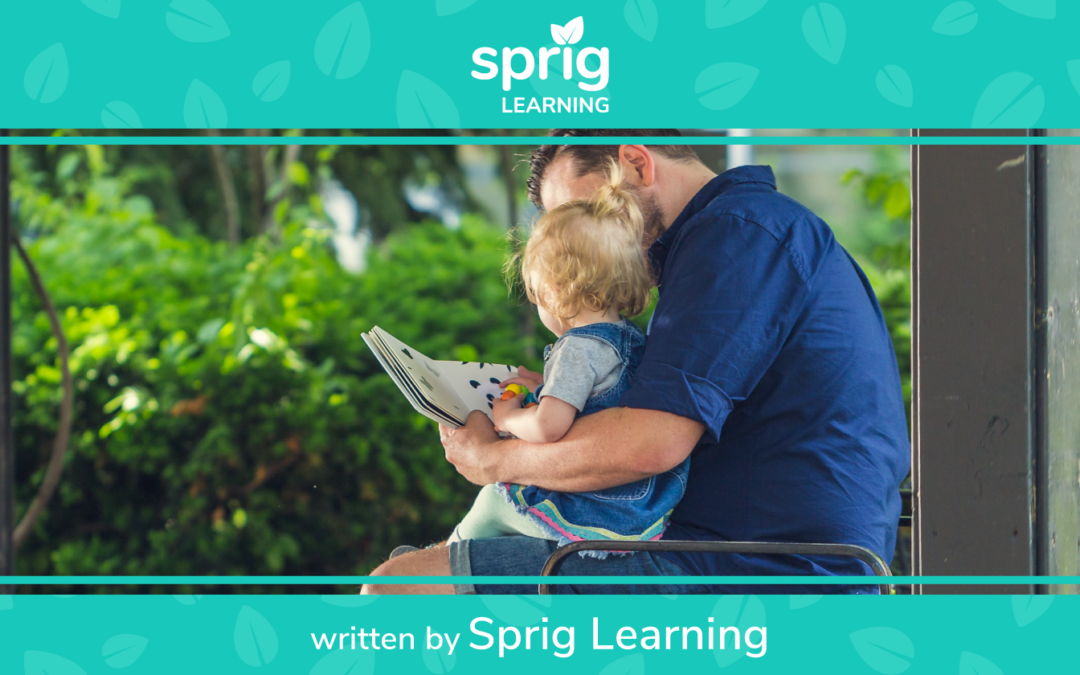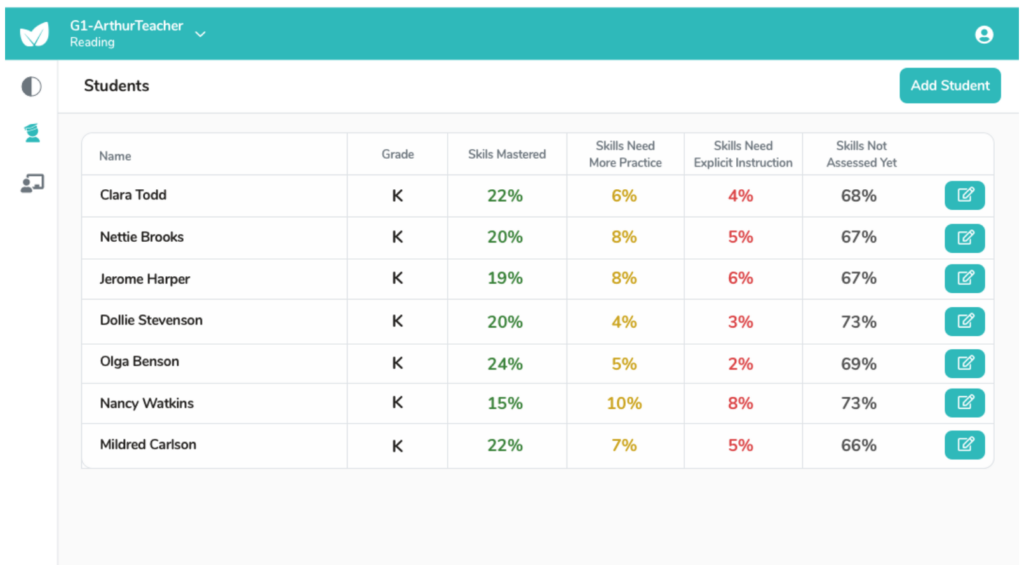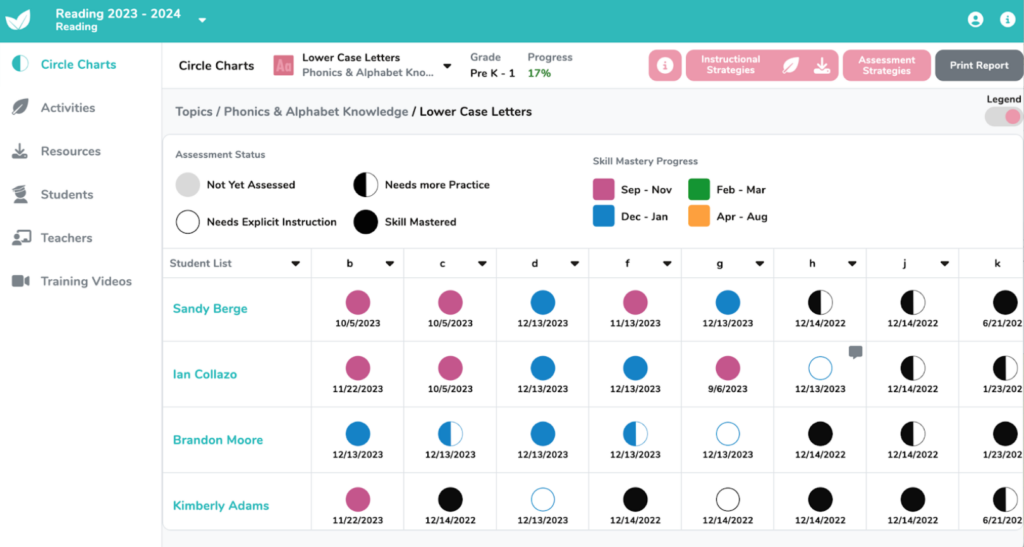It’s never too late for anyone to improve their skill level in reading or writing. But it’s best if such a process starts early, hence the importance of early literacy!
Sprig Language was created to help early learners achieve the fundamental milestones of literacy, beginning with oral language and leading to foundational reading and writing skills. Sprig Reading helps teachers track, assess and monitor the foundational reading skills throughout the school year.
What sets Sprig Learning resources apart from any other early literacy resources is that they support learning both inside the classroom and at homes with families.
They are ideally suited for early learning, taking into account a young child’s learning process, and their daily interactions with everyone in the home and community.
Indeed, in a child’s developmental years, the mind is like a sponge. Young learners absorb every bit of information, whether they interact with their:
Parents
Siblings
Grandparents
Uncles, aunts, cousins
Teachers
Caregivers
Friends
Learning resources
Learning programs
Thus, it’s important that early literacy development is a collective effort between all of the people, supports and resources involved.
The Six Rules to Drive Early Literacy
When it comes to something as pivotal to future success as early literacy, there are certain rules for educators, which the research tells us makes a big impact on learning.
They help give early literacy activities a shape and structure. They also help to combine the people, the process and technology into one seamlessly blended learning experience.
These six rules are integral in ensuring that early learners are set up for future success.
When crafting an early literacy strategy, keep these six rules in mind. All are golden, so they are listed in no particular order.
Rule Number 1— Use Recommended Duration Time for Planning
Setting aside dedicated time to focus on activities that develop listening, speaking, reading and all other literacy skills is essential. Often, if it’s not scheduled, it doesn’t get done in a meaningful way.
To make planning easier, Sprig Language includes hundreds of whole-class, center-based and individual activities that teachers can incorporate in their scheduled literacy blocks. Every activity highlights estimated durations for the activity to easily slot in a classroom planner or schedule (see below).
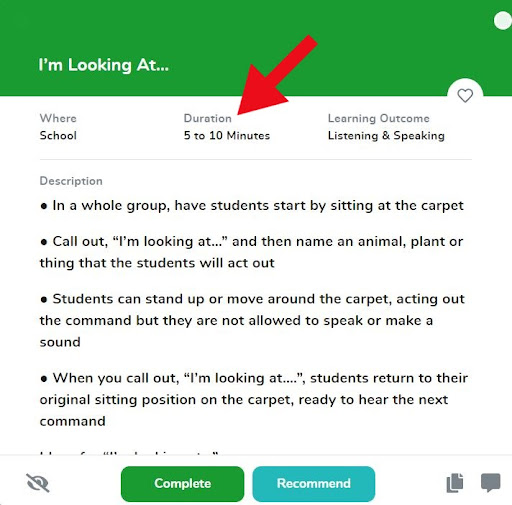
The time mentioned for each activity lets the educator know approximately how long each learning activity is expected to take.
Practice makes perfect, and practice requires dedicated time.
Rule Number 2— Build a Literacy Rich Environment
A literacy rich environment is one that includes sufficient educational materials and resources, both print and digital.
When a young learner is surrounded by engaging and attractive resources, they are inspired! Resources can include material such as books, alphabet cards, writing exercises, cutouts to decorate classrooms that teach certain concepts, etc.,
Furthermore, it’s important to foster some level of digital literacy as well. One way this can be done is by having literacy apps and/or animated versions of storybooks, which stimulate multiple senses like audio, to build literacy skills.
When an early learner finds themselves in an environment that is designed to promote literacy, they learn faster.
Active and playful practice centers create engaging and interactive learning environments for young learners. By incorporating hands-on activities, games, and interactive materials, educators can make the learning process enjoyable and effective. One of the ways this can be done is through guided play-based learning.
It is critical to provide educational materials that are both on- and off-screen. The Sprig Learning platform is focused on assessment, instructional support and classroom management, but often it’s the many wonderful digital and physical learning materials that enrich the classroom environment!
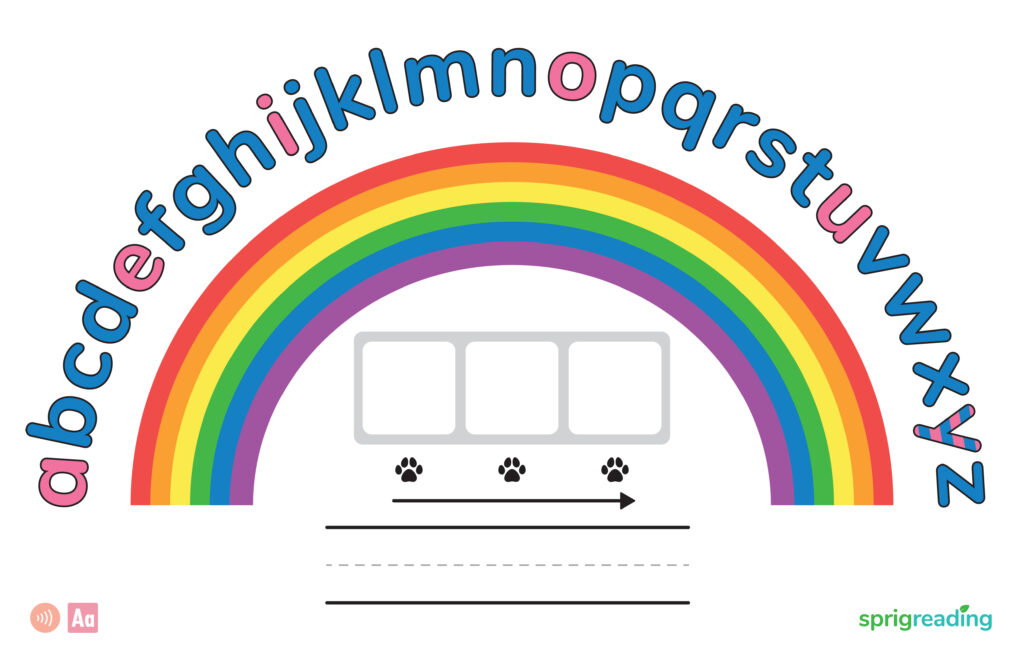
Above is an alphabetic arc that is used to help build speed, accuracy, and automaticity in alphabet knowledge, letter recognition, and sequencing.
There are hundreds more printable assets available through Sprig’s programs which allow educators to plan engaging classroom and center-based literacy activities.
Rule Number 3— Be Consistent in What You Teach (Training and Application)

The Center for American Progress, an independent nonpartisan policy institute, says that “the advancement of literacy as a national priority has been inconsistent.” There is a need for targeted funding to low-income schools with a high concentration of students in poverty.
It’s not fair to isolate the US in this lack of uniform planning for literacy improvements. It’s the same case throughout the world. In a recent study from Alberta, Canada, students from grade 1 to 3 were 8 to 12 months behind their reading level.
More alarming is the fact that 3 out of 4 students who do not overcome their reading difficulties by grade 3, struggle with lifelong learning.
In the US, a significant number of states have made the science of reading a prerequisite for elementary school teacher licensure. However, not all of these states require a comprehensive assessment of knowledge in all five components of scientifically based reading instruction, namely: phonological awareness, phonics, fluency, vocabulary and comprehension.
There is a great opportunity for professional development (PD) to include all of these foundational reading skills, which happens through training. Equally, there is an opportunity to use tools that are built to help students master these essential reading skills.
Without such tools and training, there is a lot more room for improvisation on effective instructional strategies and for choosing the best evidence-based practices suited to building pronunciation, word recognition, etc.
With a tool that is already optimized to work on all these areas, the PD finds an immediate outlet through which it can have the greatest impact.Sprig Reading works on the foundational reading skills such as alphabet knowledge, phonics, phonological awareness, reading fluency and comprehension.
Rule Number 4— Partner with Parents and Community
Learning to read can be so much more fun (and effective) for children when family members are engaged.
But aside from being fun, it’s a great way to ensure that learning continues outside of the classroom. Significant brain development for a child happens from two to seven years of age. So it’s important to maximize learning inputs during this time.
Holistic learning is premised on building a comprehensive understanding of a child’s learning that occurs in the school, in the home and in the community, in a way that is both balanced and holistic.
Parents often struggle to find time to reach with their child, but there are many ways caregivers can be actively involved in their child’s education.
Just as a student is informed in school about all the reading resources that are available to them, parents should also be aware. There are many apps available for download that provide access to high-quality reading materials.
To help bridge the communication divide between educators and parents, Sprig Learning resources have parent and caregiver surveys that help educators get a perspective of the learning opportunities that occur at home.
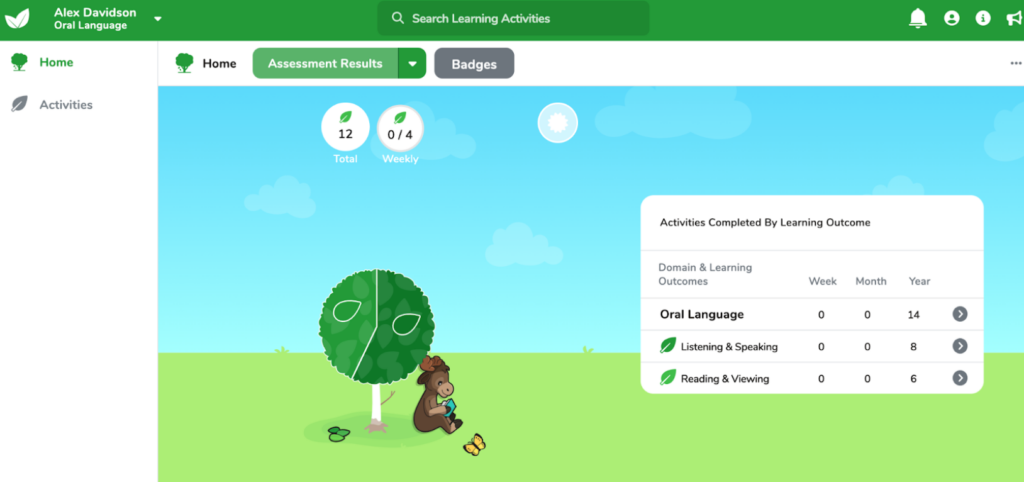
An example of a Caregiver Portal homepage where caregivers are able to see and complete personalized teacher-developed activities with the child to accelerate learning. They can also share their experience in a survey from the same portal.
Rule Number 5— Offer Structured Literacy Intervention
Structure ensures that no student falls through the cracks when it comes to acquiring the help they need.
Structured literacy intervention plays a crucial role in early literacy development. It focuses on providing targeted instruction to struggling readers, early and often, to help them build essential reading skills.
With a structured approach, educators can effectively address individual learning needs and support students in their reading journeys.
Sprig Reading offers the means to deliver structured literacy instruction, where the learning material is systematically organized, and provides the ability for teachers to deliver explicit instruction (for individuals, groups and/or classroom) based on continuous assessment and observation.
This empowers teachers to guide students towards reading success by following a structured approach to literacy interventions.
Regardless of the evidence-based intervention model used, such as multi-tier systems of supports or Response to Intervention, Sprig Reading enhances the capability for differentiated instruction.
The picture below shows a case where the assessment and instructional needs of students are similar, but where individual data is also displayed for further analysis as needed.
Rule Number 6— Formatively Assess All Students
Formative assessment is a powerful tool for understanding students’ progress and identifying areas that require additional support. It is a precursor to the earlier rule of offering structured literacy intervention.
Formative assessments are essential for effectively supporting differentiated instruction. Solely relying on summative assessments can be detrimental, as the resulting data is often too late to address students’ current learning needs, and align them with appropriate lesson plans and curriculum. Without timely formative assessments, the opportunity to intervene and support students’ learning journeys may be missed, hindering their overall academic development.
By regularly assessing students’ reading skills and comprehension, educators can make informed instructional decisions and tailor their teaching accordingly.
Sprig Reading offers a robust formative assessment mechanism via its circle charts that enable teachers to regularly track student growth, identify strengths and areas for improvement, and adjust instruction to meet individual needs.
The Cheat Code

These six golden rules are incredibly powerful for early literacy development. It helps to have a summary takeaway that combines all of them into one effective adage.
Summary Takeaway:
Consistently schedule time to teach specific literacy skills in a resource-rich environment, in partnership with others involved in the child’s early learning.
Formatively assess, track and monitor progress in a structured system that allows for timely interventions and personalized instruction.
Sprig Learning is passionate about early learning, especially as it relates to early literacy. If you liked reading this article, please consider subscribing to our blog. See button below.
If you have questions about implementing the right programs for early literacy development, please contact us.

